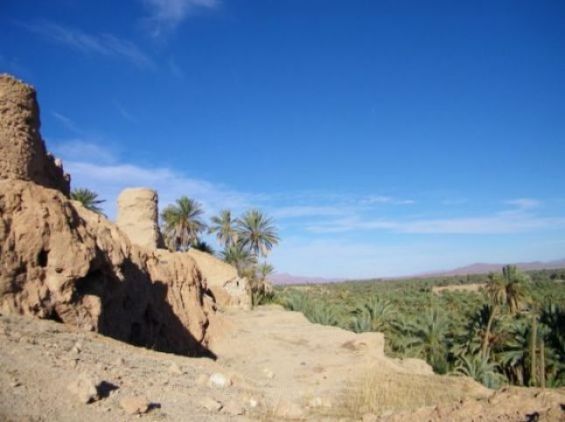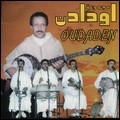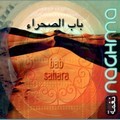By March 18, the palm groves of El Arja, near Figuig, will see their Moroccan owners leave after they were urged by Algerian soldiers to leave that territory that would not be under the sovereignty of Morocco.
In Figuig, a little further south of these lands, Yabiladi learned from local civil society actors that Moroccan authorities have also informed the owners of the imperative of this displacement, «for the sake of protecting their lives».
But for the date palms operators, the border tracing is not the same as what was agreed upon between Morocco and Algeria. According to the Algerian official bulletin n ° 48 of Friday, June 15, 1973, consulted by Yabiladi, the Convention on tracing the state border established between Morocco and Algeria mentions a border «along the line of ridges passing through the points sides 1544, 1026 (djbel Melias)». It then passes «on the line of ridges of the heights separating the Oases of Beni Ounif and Figuig, then bypasses the dune areas to the east of this locality by following the unnamed river, until it meets the river Halouf».

The latter «is followed towards the north, as far as Beni Smir». The text goes on to say that «from Ras Beni Smir, the border follows the line of ridges of Jebel Abiène, passing through the coasts 1769, 1735, 1704, bypassing Ich to the east, it goes, in a straight line towards the north-west, passing 800 meters east of Hassi El Mekhareg, to the point of coordinates 04 ° 01 'west, 36 ° 33' north».
An agreement between King Hassan II and Boumediène defines a route
This agreement, sealed by King Hassan II and Houari Boumediène in 1972, was not published in the Official Bulletin of Morocco on July 1, 1992 in the same terms. To associative actors from the region, contacted by Yabiladi, this text suggests that «the nameless river would be Zousfana as well as the river which joins it, which is the one that passes through El Arja». This indicates according to them that «everything on the other side is Algerian» and that «it is officially agreed that half of the historic lands of Figuig are in Algeria».
But the date palm growers have another interpretation of this convention. They believe that the waters crossing El Arja are well known to be eponymous, the «nameless river» thus being the one that passes to the other side of the ridges, which they consider to be Algerian, unlike their lands located northeast of Figuig.

Local association figure, Mohamed Ammari told Yabiladi that «the route is well defined in the agreement between the two countries, but the big question remains that the locals consider the 'nameless river' which delimits the space as being that of the 'other side of the height and not the El Arja river which crosses the palm groves».
«In all cases and apart from questions of Moroccan or Algerian sovereignty, that of the protection of individual goods is a serious issue for farmers, with regard to the international law that protects them and the responsibility of each country to protect the economic rights of its nationals».
A sovereignty which must not exclude the protection of individual property
In this sense, Mohamed Ammari wonders about Morocco's position in the face of what is currently happening. He believes that «the local authorities should either guarantee, via an administrative agreement, restricted access to farmers who will no longer live in El Arja if the territory is indeed Algerian, but who will be able to go there for their agricultural work as heirs and operators whose identification is documented», or whether they would «compensate them before imposing on them such a sudden displacement, while whatever the terms of the agreement, these operators have never been worried about their activities for decades». Mohamed Ammari deplores that neither «of the two options has been thought of for Morocco».
If they are dispossessed of their property in El Arja, in strict reactivation of an agreement signed in the 1970s but which was not binding on the local tribes and their agricultural activities, will the farmers be rehabilitated? For the time being, the local authorities in Figuig are not actually addressing the issue.
In El Arja, displaced farmers will leave between 10,000 and 15,000 palm trees behind. The most productive dates, which are numerous, bring in up to 4,000 dirhams per year. On the spot, they also set up with their own means, including the solar energy installations and water connections, in addition to major road repairs to facilitate access to the oasis. In the event of compensation, the bill could be considerably high.
For the local inhabitants, what is currently happening in Figuig is the result of new political tensions between Morocco and Algeria, concerning the question of Western Sahara.
For its part, Algiers has opted for strictness. «A few military installations visible from El Arja now carry the Algerian flag, to emphasize to passers-by that they are indeed not on Moroccan territory», Mohamed Ammari told Yabiladi.




 chargement...
chargement...












